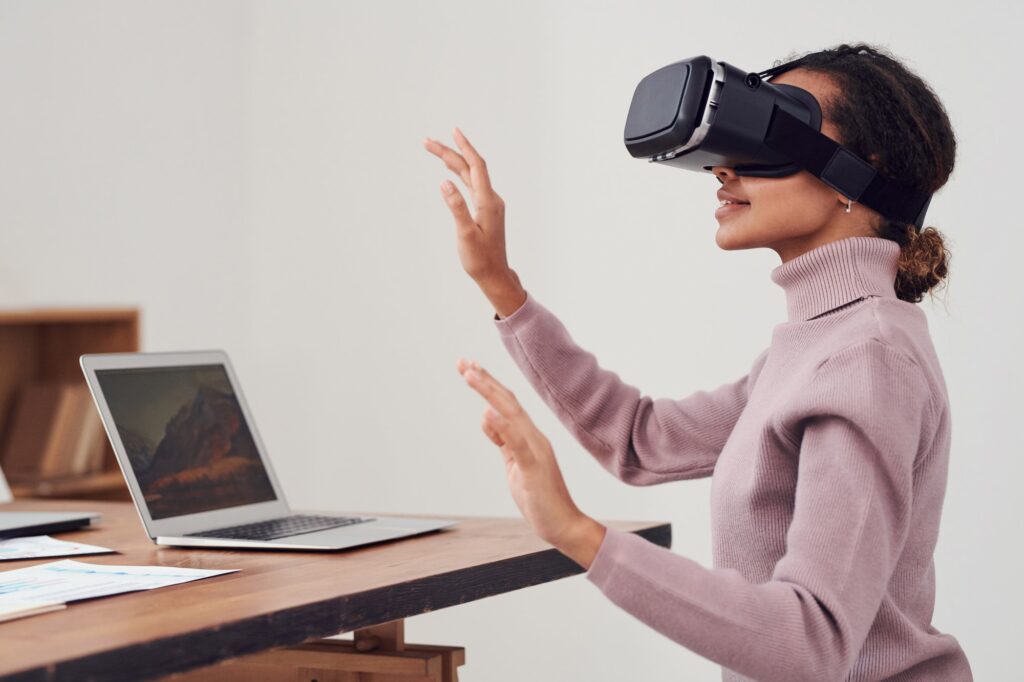Entrepreneurs face many challenges in getting their businesses up and optimizing their processes for growth and profit. These challenges include access to funding, cash flow management, building a customer base, and hiring skilled employees for critical positions.
These challenges often require trade-offs and sacrifices, and service-based startups are particularly susceptible to them; they must build their brand in parallel with highly skilled staff to ensure the service works as promised.
Using VR & AR in Your Startup
Service-based startups are increasingly leaning on virtual reality (VR) and augmented reality (AR) to address these challenges. Both technologies enable companies to extend their team’s skills through immersive learning experiences that can easily be deployed in the field.
But what exactly are VR and AR?
VR is the computer-generated simulation and recreation of a real or imaginary environment. It adds graphics and sounds to create a feeling of immersion and presence. VR can only be used with a headset, similar to goggles. You experience the VR world by seeing and hearing, and physical motions are usually limited to turning your head or rotating your body to experience different views in the field of vision. VR is 100% virtual.
AR is overlaid on top of the real world; it enhances what you can see by adding information to your perception. AR also uses a headset but is only 25% virtual. Its purpose is to allow you to fully interact with the real world. An AR headset may be as basic as goggles that overlay a street map (think Google Maps) into the field of vision to give users a map while they move.
But AR may also require more advanced hardware, depending on the application. There are vests and gloves that utilize haptic feedback as prompts, as well as more advanced “hand” sets that allow remote users to see the view of the goggle wearer and manipulate a physical object.
One example is a pair of haptic gloves that ‘buzz’ a user on their hands when they’re near the part on a machine that needs repair. A junior field service tech with haptic gloves and goggles could have a machine in front of them while a senior tech triggers haptic signals or runs the machine remotely.
Both VR and AR can be used in applications that help streamline processes, increase productivity, and generate new ideas by getting employees out of the office and into other environments.
Building Your Customer Base
Many customers want to see a product in action before purchasing. Unlike manufactured goods, service-based companies often rely on media, presentations, and simulations to reach their clients.
Startups can use virtual reality to display their service in various environments, and these 360 visualizations allow customers to see what their experience would look like. When customers have a chance to visualize your offering, their experience becomes more memorable and they know exactly what they’re purchasing.
Process Optimization & Training
Startups must always seek to optimize processes and train their employees cost-effectively. AR can be used to change the design of a physical process. For instance, if you’re creating a new factory, you could use a virtual environment to show the processes you’ll be using. By doing this, you can reduce the number of mistakes that occur in the real world. You can also use VR to see how the changes in the design will affect the operation.
Other AR applications include fleet maintenance or field service repairs. Using AR goggles and software, a technician can be connected to the in-house assets in a floating visual field overlayed on the asset they’re servicing. They may also have access to manuals, automatic part ordering, and two-way interaction with more experienced technicians. This process expands their skillset, speeds up service time, and requires less trial and error.
Many businesses now use VR to train their employees. Companies with jobs requiring precision or a lot of redundancy are well suited for these training programs. Using VR to instruct and train employees means that training can be done effectively from remote locations. It also means that employees can visualize safety and security simulations with an eye to real-world applications.
VR and AR training also allow a “hands-on” experience without wasting expensive material due to mistakes as employees learn.
Empower Your Startup With VR & AR
Regardless of your industry, you can use VR and AR to create innovative business solutions. Whether it’s to help a customer navigate a website or give your employees a chance to perform their jobs in a safe, controlled environment, it’s crucial to understand how to make the most of this technology.
The Henry Bernick Entrepreneurship Centre (HBEC) at Georgian College empowers entrepreneurs through training, R&D, mentorship, and more. Our programs include training on the latest technology and tools to help build your brand, optimize your processes, and grow your business. Contact us to learn more.




